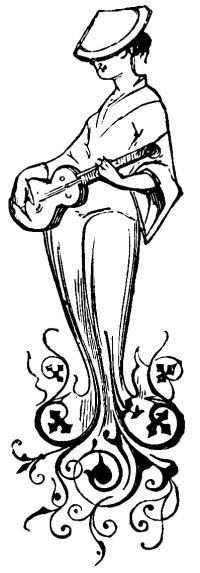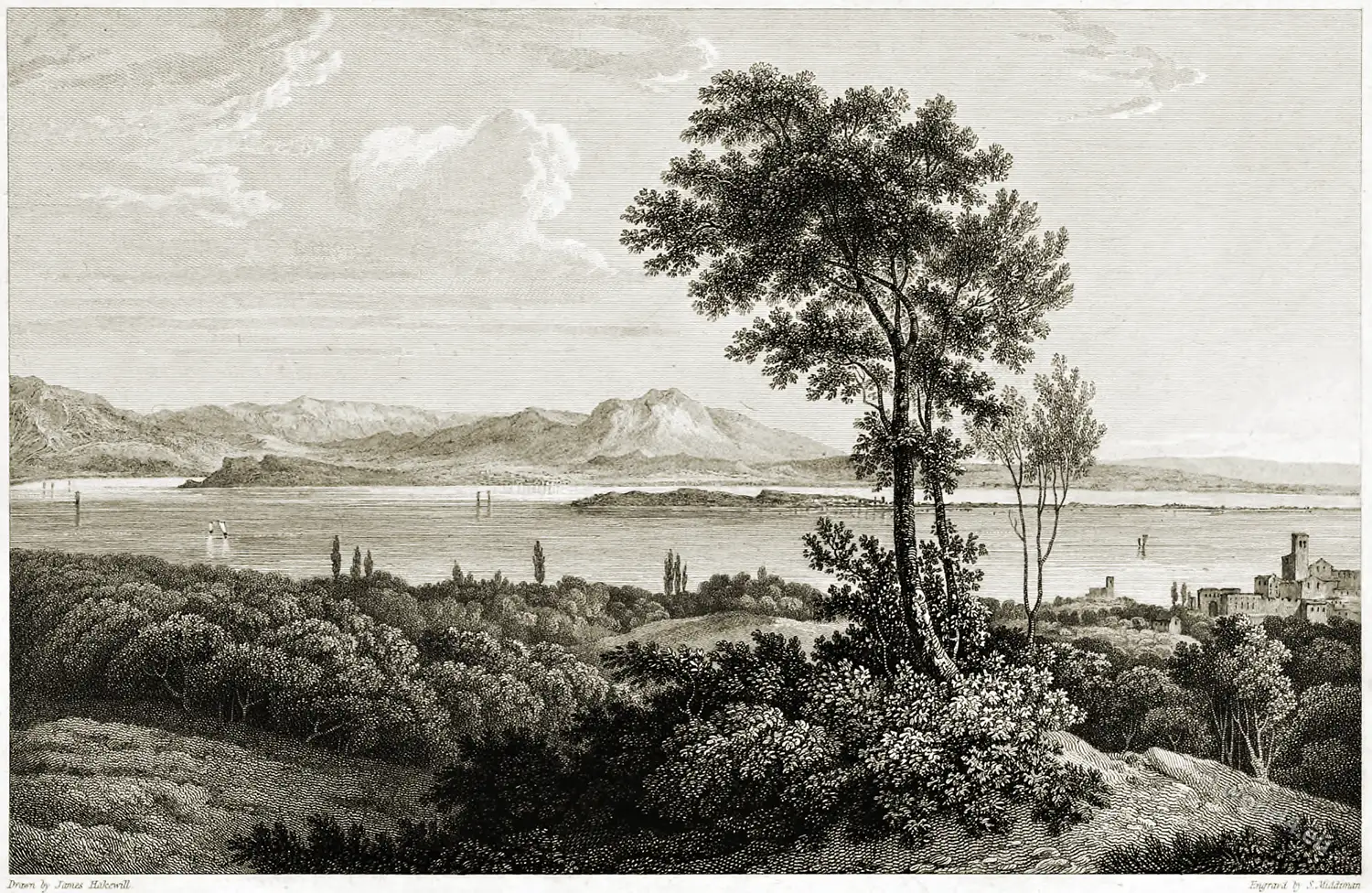LAGO DI GARDA, FROM ABOVE DESENZANO
by James Hakewill.
The combination of Alpine scenery with the more tranquil beauty of Italian landscape, the snow-capped mountains and rocky promontories on the one hand, the broad-roofed buildings, with the vine, the olive, and the cypress on the other, make a forcible impression on the traveller’s mind as he enters within the barriers of this country. If we add to these circumstances, that it is the Benacus celebrated by Virgil which meets his eye, and Sirmio, a name ever associated with the elegant and graceful version of Catullus, the picture is complete.
The long promontory seen stretching across the View, is that which is invoked as the “peninsularum insularumque ocelle,” still beautiful with its picturesque village, its cliffs tufted with trees, and the rich verdure of its cultivation; for the appearance of agricultural labour and art, so far from being in any way prejudicial to beauty, bears the semblance here, as every where in Italy, of a dress highly ornamental.
An ancient bath is to be seen near the upper extremity, and a ruin, called by the people of the country (somewhat unwarrantably) the grotto of Catullus: though, says Maffei, it must be confessed, that, in all probability, the island was his own property, for he was one of good condition in life, as appears, not merely from his being admitted to the table of the Emperor, but from his having the honour of receiving him as his regular host, whenever he visited Verona.
As to the ocean-like roar, mentioned by Virgil, it should be observed, that, in common with all mountain lakes, the Benacus, or L. di Garda, is subject to violent and sudden storms, in consequence of the wind eddying through the ravines on its sides: the effect has been witnessed by many travellers.
On the right, the lake stretches towards Peschiera, a fortress well known in military history; for these peaceful scenes too have been visited by the “scourges of the human race.” Attila, the Hun, gathering his forces together in Pannonia, entered Italy by the route of Aquileia, and advanced as far as this place,threatening to carry rapine and desolation to the walls of Rome.
Here, however, he was met by a peaceful legation: the Pope, S. Leo, accompanied by two Roman senators, in consequence of whose representations it was, that he was induced to put a stop to his ravages, and shortly after re-passed the Alps.
It was in these parts that Buonaparte particularly distinguished himself during his first campaign in Italy, by an exhibition of military combination and rapidity of movement rarely equalled. General Wurmser had assumed the command of the Austrian army, and being greatly superior in numbers, had driven the French from most of the positions they had lately occupied in the neighbourhood; while two of his corps, descending on opposite sides of the lake, threatened to surround them, and cut them off from their resources.
There was no time for delay: in twenty-four hours the siege of Mantua was raised, and Buonaparte set his troops in motion. Augereau was ordered forward, Brescia was re-taken, and the corps on his left repulsed, while the three following days completed the affair by the defeat of the body opposed to him on his right Desenzano was one of the points where he was most successful, upwards of 2000 men being cut off and taken prisoners on the borders of the lake.
The celebrated carpione of the Lago di Garda, fabulously said, from its excellence, to be a fish that lived upon gold, is of the same species with the gilt charwhich is found in our lakes in Cumberland. The water shave the reputation of being particularly useful in bleaching, and are probably impregnated with some chemical qualities from the mountainous regions from whence they spring.
Source: A picturesque tour of Italy, from drawings made in 1816-1817 by James Hakewill (1778-1843); Turner, J. M. W. (Joseph Mallord William). London: John Murray, 1820.


